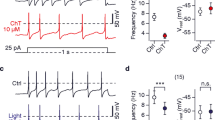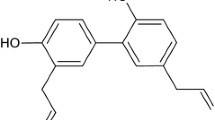Abstract
Field-potential stimulation of rat dorsal-root ganglion (DRG) neurons evoked action-potential-mediated transient increases in intracellular free calcium concentration ([Ca2+]i) as measured by indo-1-based microfluorimetry. Field-potential-evoked [Ca2+]i transients were abolished by tetrodotoxin, and their dependence on stimulus intensity exhibited an abrupt threshold. ω-Conotoxin GVIA (ω-CgTx, 100 nM) inhibited action-potential-mediated Ca2+ influx by 79%, while nitrendipine (1 μM) had little effect. ω-Grammotoxin SIA (ω-GsTx, 267 nM), a peptide toxin purified from the venom of the tarantula spider, Grammostola spatulata, blocked action-potential-mediated Ca2+ influx as effectively as did ω-CgTx, suggesting that ω-GsTx blocks N-type Ca2+ channels. In contrast to block by ω-CgTx, the block produced by ω-GsTx reversed upon washout of the peptide. ω-GsTx (270 nM) blocked 80%, and ω-CgTx (1 μM) blocked 64%, of whole-cell Ca2+ current (I Ca) elicited by step depolarization to 0 mV from a holding potential of −80 mV. ω-GsTx completely occluded inhibition of I Ca by ω-CgTx. However, when applied after ω-CgTx, ω-GsTx produced an additional inhibition of 27%, indicating that ω-GsTx also blocked a non-N-type Ca2+ channel. BayK8644 (1 μM) elicited an increase in I Ca in the presence of maximally effective concentrations of ω-GsTx, suggesting that ω-GsTx does not block L-type channels. Thus, ω-GsTx displays a selectivity for Ca2+ channel subtypes which should prove useful for studying Ca2+ channels and Ca2+-channel-mediated processes.
Similar content being viewed by others
References
Bean BP (1991) Pharmacology of calcium channels in cardiac muscle, vascular muscle, and neurons. Am J Hypertens 4:406S-411S
Carbone E, Lux H (1984) A low voltage-activated, fully inactivating Ca2+ channel in vertebrate sensory neurones. Nature 310:501–502
Cruz LJ, Johnson DS, Olivera BM (1987) Characterization of the omega-conotoxin target: evidence for tissue-specific heterogeneity in calcium channel types. Biochemistry 26: 820–824
DeFeo PA, Mangano TJ, Adams ME, Keith RA (1992) Inhibition of ω-conotoxin GVIA insensitive neurotransmitter release by ω-Aga-IVA. Pharmacol Commun 1:273–278
Fox AP, Nowycky MC, Tsien RW (1987) Kinetic and pharmacological properties distinguishing three types of calcium currents in chick sensory neurones. J Physiol (Lond) 394:149–172
Fujita Y, Mynlieff M, Dirksen RT, Kim MS, Niidome T, Nakai J, Friedrich T, Iwabe N, Miyata T, Furuichi T, Furutama D, Mikoshiba K, Mori Y, Beam KG (1993) Primary structure and functional expression of the omega-conotoxin-sensitive N-type calcium channel from rabbit brain. Neuron 10:585–598
Grynkiewicz G, Peonie M, Tsien RY (1985) A new generation of calcium indicators with greatly improved fluorescence properties. J Biol Chem 260:3440–3450
Hamill OP, Marty A, Neher E, Sakmann B, Sigworth F (1981) Improved patch-clamp techniques for high resolution current recording from cells and cell-free membrane patches. Pflügers Arch 391:85–100
Hillyard DR, Monje VD, Mintz IM, Bean BP, Nadasdi L, Ramachandran J, Milijanich G, Azimi-Zoonooz A, McIntosh JM, Cruz LJ, Imperial JS, Olivera BM (1992) A new conus peptide ligand for mammalian presynaptic Ca2+ channels. Neuron 9:69–77
Hirning LD, Fox AP, McCleskey EW, Olivera BM, Thayer SA, Miller RJ, Tsien RW (1988) Dominant role of N-type Ca2+ channels in evoked release of norepinephrine from sympathetic neurons. Science 239:57–60
Holz GG, Dunlap K, Kream RM (1988) Characterization of the electrically evoked release of substance P from dorsal root ganglion neurons: methods and dihydropyridine sensitivity. J Neurosci 8:463–471
Keith R, Defeo P, Lampe R, Spence K, Lo M, Ffrenchmullen J (1992) Inhibition of neuronal calcium channels by a fraction from Grammostola spatulata venom. Pharmacol Commun 1:19–25
Keith RA, Defeo PA, Horn MB, Mangano TJ, Lampe RA (1992) ω-Grammotoxin SIA: a spider venom peptide inhibitor of ω-conotoxin GVIA-sensitive and -insensitive voltage-sensitive calcium channel responses. Soc Neurosci Abs 18:970
Lampe RA, DeFeo PA, Davison MD, Young J, Herman JL, Spreen RC, Horn MB, Mangano TD, Keith RA (1993) Isolation and pharmacological characterization of ω-grammotoxin SIA: a novel peptide inhibitor of neuronal voltage-sensitive calcium channel responses. Mol Pharmacol 44:451–460
Lampe RA, Lo MM, Davison M, Horn MB, Verticelli A, DeFeo PA, Herman JL, Keith RA (1992) Isolation and structural characterization of ω-grammotoxin SIA, a novel peptide inhibitor of neuronal voltage-sensitive calcium channels. Soc Neurosci Abs 18:970
Levitan IB (1988) Modulation of ion channels in neurons and other cells. Ann Rev Neurosci 11:119–136
Llinas R, Sugimori M, Lin J-W, Cherksey B (1989) Blocking and isolation of a calcium channel from neurons in mammals and cephalopods utilizing a toxin fraction (FTX) from funnelweb spider poison. Proc Natl Acad Sci USA 86:1689–1693
Lundy PM, Frew R, Fuller TW, Hamilton MG (1991) Pharmacological evidence for an ω-conotoxin, dihydropyridine-insensitive neuronal Ca2+ channel. Eur J Pharmacol 206:61–68
Mangano TJ, Patel J, Salama AI, Keith RA (1991) Inhibition of K+-evoked [3H]D-aspartate release and neuronal calcium influx by verapamil, diltiazem and dextromethorphan: evidence for non-L/non-N voltage-sensitive calcium channels. Eur J Pharmacol 192:9–17
McCleskey EW, Fox AP, Feldman D, Cruz LJ, Olivera BM, Tsien RW, Yoshikami D (1987) Calcium channel blockade by a peptide from conus: specificity and mechanism. Proc Natl Acad Sci USA 84:4327–4331
Mintz IM, Adams ME, Bean BP (1992) P-type calcium currents in rat central and peripheral neurons. Neuron 9:85–95
Mintz IM, Venema VJ, Swiderek KM, Lee TD, Bean BP, Adams ME (1992) P-type calcium channels blocked by the spider toxin ω-Aga-IVA. Nature 355:827–830
Morgan JI, Curran T (1988) Calcium as a modulator of the immediate-early gene cascade in neurons. Cell Calcium 9:303–311
Mori Y, Friedrich T, Kim S-M, Mikami A, Nakai J, Ruth P, Bosse E, Hofmann F, Flockerzi V, Furuichi T, Mikoshiba K, Imoto K, Tanabe T, Numa S (1991) Primary structure and functional expression from complemetary DNA of a brain calcium channel. Nature 350:398–402
Mulkey RM, Zucker RS (1991) Action potentials must admit calcium to evoke transmitter release. Nature 350:153–155
Nowycky MC, Fox AP, Tsien RW (1985) Long-opening mode of gating of neuronal calcium channels and its promotion by the dihydropyridine calcium agonist Bay D 8644. Proc Natl Acad Sci USA 82:2178–2182
Perney TM, Hirning LD, Leeman SE, Miller RJ (1986) Multiple calcium channels mediate neurotransmitter release from peripheral neurons. Proc Natl Acad Sci USA 83:6656–6659
Regan LJ, Sah DW, Bean BP (1991) Ca2+ channels in rat central and peripheral neurons: high-threshold current resistant to dihydropyridine blockers and omega-conotoxin. Neuron 6:269–280
Sather WA, Tanabe T, Zhang J-F, Mori Y, Adams ME, Tsien RW (1993) Distinctive biophysical and pharmacological properties of class A (BI) calcium channels α1 subunits. Neuron 11:291–303
Scroggs RS, Fox AP (1992) Calcium current variation between acutely isolated adult rat dorsal root ganglion neurons of different size. J Physiol (Lond) 445:639–658
Scroggs SR, Fox PA (1991) Distribution of dihydropyridine and ω-conotoxin-sensitive calcium currents in acutely isolated rat and frog sensory neuron somata: diameter-dependent L channel expression in frog. J Neurosci 11:1334–1346
Sipahimalani AS, Werth JL, Michelson RH, Dutta AK, Efange SMN, Thayer SA (1992) Lipophilic amino alcohols with calcium channel blocking activity. Biochem Pharmacol 44:2039–2046
Snuth PT, Leonard PJ, Gilbert MM, Lester AH, Davidson N (1990) Rat brain expresses a heterogeneous family of calcium channels. Proc Natl Acad Sci USA 87:3391–3395
Snutch TP, Tomlinson WJ, Leonard JP, Gilbert MM (1991) Distinct calcium channels are generated by alternative splicing and are differentially expressed in the mammalian CNS. Neurons 7:45–57
Suszkiw JB, Murawsky MM, Shi M (1989) Further characterization of phasic calcium influx in rat cerebrocortical synaptosomes: inferences regarding calcium channel type(s) in nerve endings. J Neurochem 52:1260–1269
Thayer SA, Miller RJ (1990) Regulation of the free intracellular calcium concentration in rat dorsal root ganglion neurones in vitro. J Physiol (Lond) 425:85–115
Thayer SA, Sturek M, Miller RJ (1988) Measurement of neuronal Ca2+ transients using simultaneous microfluorimetry and electrophysiology. Pflügers Arch 412:216–223
Turner TJ, Adams ME, Dunlap K (1992) Calcium channels coupled to glutamate release identified by ω-Aga-IVA. Science 258:310–313
Weetall HH (1970) Storage stability of water-insoluble enzymes covalently coupled to organic and inorganic carriers. Biochim Biophys Acta 212:1–7
Williams ME, Brust PF, Feldman DH, Patthi S, Simerson S, Maroufi A, McCue AF, Velicelebi G, Ellis SB, Harpold MM (1992) Structure and functional expression of an ω-conotoxinsensitive human N-type calcium channel. Science 257:389–395
Author information
Authors and Affiliations
Rights and permissions
About this article
Cite this article
Piser, T.M., Lampe, R.A., Keith, R.A. et al. ω-Grammotoxin blocks action-potential-induced Ca2+ influx and whole-cell Ca2+ current in rat dorsal-root ganglion neurons. Pflügers Arch. 426, 214–220 (1994). https://doi.org/10.1007/BF00374774
Received:
Accepted:
Issue Date:
DOI: https://doi.org/10.1007/BF00374774




